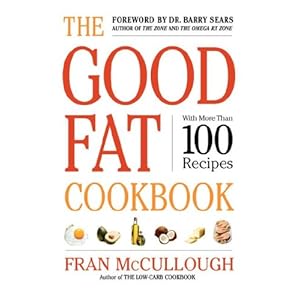Quick and Easy Cheap and Healthy The Importance of Fat {Especially for a Woman} and a Book Review |  |
| The Importance of Fat {Especially for a Woman} and a Book Review Posted: 12 Mar 2012 07:30 PM PDT Thank you for subscribing to Quick and Easy Cheap and Healthy; click here for your free copy of Sizzlin' Soups!
I just finished reading a fascinating book called “The Good Fat Cookbook“. It’s not what you might think, especially if you subscribe to contemporary thought that designates polyunsaturated fats as good and saturated fats as evil incarnate. The back of the book will give you a clue, though, as it lists the Good and Bad fats under consideration. On the list of good fats: butter, coconut, red meat, eggs, bacon, milk, and ice cream. Surprised? How about the bad fats? Canola oil, reduced-fat anything, soy, vegetable oil, and more. Doubly surprised? If you were even mildly surprised by that good and bad listing, you should read this book! Before diving into some delicious and awesome healthy-fat-filled recipes, author Fran McCullough takes you through the history and science regarding all the various kinds of dietary fats, and explains all the ramifications they have on our health. And even though I’ve been a full-fat enthusiast for years, I learned a lot in this book, so I can recommend it for seasoned whole foodies, too. Here are some quotes from the book:
I could offer you a lot more quotes from the book, but really, you should read it yourself. Some of the topics McCullough covers:
There are some things I noticed in the book that you should be aware of. For one, I find the author to be occasionally confusing, and seems to contradict herself at times. Also, while she is well-researched regarding fats in the diet, she misses the mark on some of her other recommendations (for example, she offers Splenda as a good substitute for sugars in the dessert section of the cookbook). Over all, though, I highly recommend reading this book, whether or not you are well versed in the sad history of fat in America. You will find it fascinating and thought-provoking if nothing else. And besides, she’s got some great recipes in the back of the book, like Lemon Posset, and Cuban Roast Pork with Lime. Since my topic is Women’s Wellness, though, I want to focus for a second on the connection between fats and hormones, which she mentions in the book. Here’s a quote:
Did you know that your body needs cholesterol to make hormones? Or that eating low-fat dairy products inhibits your body’s ability to ovulate? Or that essential fatty acids can ease PMS symptoms? Read about some more essential roles that fat plays in the body here. Clearly, our bodies require fats, and not just in small amounts, either. It’s a commonly accepted fact that fat is one of the three macronutrients – foods our bodies need in large amounts in order to survive and thrive. Many people try to reduce either carbs or fats, but the simple truth is we need both. While the media continues to draw the opposite conclusion, it seems to me that all the evidence points to this: fats are essential to health, especially to a woman’s reproductive health. The only kind of fat proven to be detrimental to reproductive health is trans fats, and we all already knew those were evil. But basic biology and nutrition show us clearly that we need to have an adequate amount of fat in our diet in order for all our body’s systems to run smoothly. Women, in particular, struggle with this because of our body shape and image. We want to look skinny, so we follow the contemporary advice that instructs us to eat less fat so we have less fat. The problem is that this advice is flawed on so many levels. First of all, women aren’t meant to be super thin. We’ve all heard of the gymnasts and ballerinas with amenorrhea (absence of menstruation) because they don’t have enough body fat and exercise too much, but we don’t stop to consider that the same thing could be happening to us, just not on as extreme of a level. Maybe we don’t want to look like a gymnast, but we still starve ourselves or work ourselves to the bone trying to get rid of something that’s supposed to be there. (Now, of course, there’s the opposite extreme. Obesity doesn’t help your reproductive system – or any system in your body for that matter – either. I’m talking about a healthy weight here!). Secondly, fat doesn’t make you fat! Which brings me back to what I started with: read the Good Fat Cookbook. Or Eat Fat, Lose Fat. Or In Defense of Food: an Eater’s Manifesto. Or The Maker’s Diet. Or Nourishing Traditions. All of these books will convince you of your need for fat in your diet, and far more eloquently (and accurately!) than I ever could. This post contains affiliate links. |
| Save Money with Groceries with OAMS {on MoneySavingMom} Posted: 12 Mar 2012 01:34 PM PDT Thank you for subscribing to Quick and Easy Cheap and Healthy; click here for your free copy of Sizzlin' Soups! It bears repeating (over and over) that OAMS (once a month shopping) for groceries saves you lots of money, which is why I wrote a guest post on Money Saving Mom that tells you all about OAMS in a nutshell!
Read about why OAMS works so well here. |
| You are subscribed to email updates from Quick and Easy Cheap and Healthy To stop receiving these emails, you may unsubscribe now. | Email delivery powered by Google |
| Google Inc., 20 West Kinzie, Chicago IL USA 60610 | |





No comments:
Post a Comment